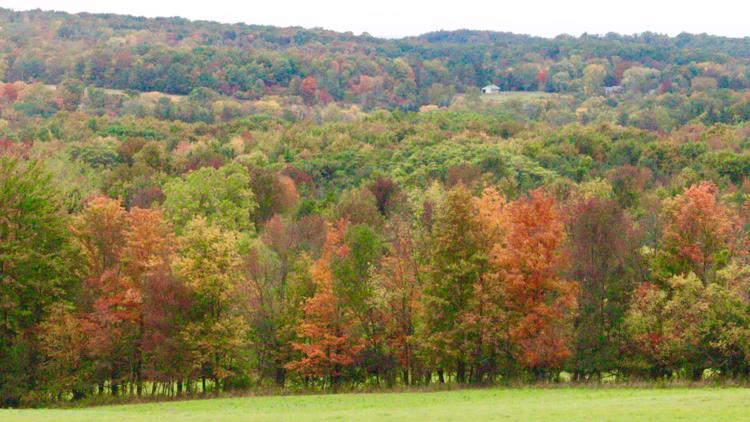BUFFALO, N.Y. — In this week's episode of "Experiments with Elyse," Storm Team 2 Meteorologist Elyse Smith shared why leaves change color in the fall and how weather can influence that process.
For Western New York, the seasonal average peak for fall colors is mid-October. Factors such as temperature, sunlight, wind and soil moisture from precipitation all effect how and when leaves change color.
But these factors aren't just taken into account during the fall season. What happens all the way back in May can influence what happens in October.
According to the National Arboretum, the best recipe for vibrant fall foliage is a wet summer followed by a dry fall with several days of sunshine and cool, but frostless, nights leading up to a region's peak.
And for Western New York, we kind of saw the opposite. We were behind in rainfall for much of the summer and already had the first official frost advisory of the year back in mid-September. What this means For Western New York is that when fall colors do peak, the peak may not last a long or be as vibrant as previous years.
As for the colors themselves, there are four primary pigments that can make up the color of a leaf: chlorophyll, xanthophyll, beta-carotene, and anthocyanin.
During the summer growing season when there is plentiful sunlight, leaves produce more chlorophyll to help make energy from sunlight. This gives the leaf a dominating green color.
But when we gradually start to loose sunlight heading into the winter, other natural colors in leaves begin to show. Yellows are associated with xanthophyll. Orange is beta-carotene. Reds and Purples are anthocyanin.


So why do leaves change color in the fall? It’s due to the natural lack of sunlight associated with the season itself! Fall colors come from the lack in chlorophyll in leaves during the season.



